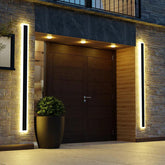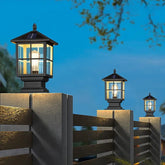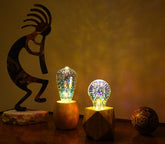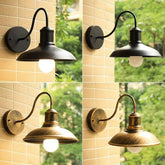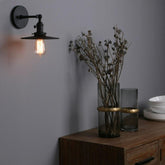How to Choose Dining Room Pendant Lights and Wall Lights to Enhance the Dining Atmosphere
1.Introduction
Dining room lighting is not just a tool for illumination; it is an essential part of the dining room atmosphere. The right lighting can enhance the overall beauty of the dining room and create a comfortable, warm dining environment. Particularly, pendant lights and wall lights—two common types of dining room lighting —can add artistic flair to the dining room, improve the lighting layout, and enhance the dining experience for customers.
There are many types of dining room lights , among which pendant lights and wall lights are two of the most common and versatile options. In this blog post, we will explore how to select the right pendant lights and wall lights based on the dining room's style , space requirements, and budget to help you create an ideal dining space.
Determine the Style of the Dining Room
Before selecting lighting, it is essential to determine the design style of the dining room. The style of a dining room is generally divided into modern, traditional, industrial, retro, and other categories, and each style has its own lighting requirements.
Modern Style : Modern dining room lighting is suitable for minimalist, streamlined pendant lights combined with cool-colored light sources, creating a fresh and simple atmosphere.
Traditional Style : Traditional-style dining rooms can opt for more decorative pendant lights, such as classical European chandeliers. These lights offer soft lighting that enhances the elegant ambiance of the dining room.


Industrial Style : Industrial ceiling lights are ideal for industrial-style dining rooms, often featuring individual bulbs or metal elements, creating a rugged and raw atmosphere.
Retro Style : Retro-style dining rooms are ideal for pendant lights with a nostalgic feel, often featuring exquisite carvings or retro metal materials.


Choosing lighting that matches the overall design style of the dining room not only enhances the harmony of the space but also highlights the dining room’s unique features.
3.Selecting Pendant Lights
As one of the most decorative elements in dining room lighting, the design and functionality of pendant lights should not be overlooked. When selecting pendant lights, the following aspects need to be considered:
Lighting Needs of the Space : Pendant lights primarily provide the main illumination, so ensure that the light coverage meets the needs of the dining area.
Shape, Material, and Size of Pendant Lights : The shape and material of the pendant light should match the dining room's style. For example, modern dining rooms may choose pendant lights with simple lines, while traditional-style dining rooms might prefer more complex crystal chandeliers. The size of the pendant light should also match the dining room’s space to avoid being too large or too small.
Installation Location and Hanging Height : Pendant lights are typically installed above the dining table or in the center of the room to ensure even light distribution. The hanging height should be adjusted according to the height of the dining table, with the bottom edge of the pendant light generally 70-80 cm above the table.
Lighting Effect : The light source of pendant lights should be matched with the brightness and color temperature. Cool light sources are suitable for modern dining rooms, while warm light sources are more appropriate for traditional or retro-style dining rooms, creating a cozy and comfortable atmosphere.
4.Selecting Wall Lights
Dining room wall lights serve as auxiliary lighting and usually add a decorative touch while improving the light distribution in the dining room. When selecting wall lights, consider the following points:
Design and Function of Wall Lights : Wall lights are not only auxiliary light sources but also help add layers to the dining room's decor. Choose designs that align with the dining room's style, such as simple wall lights for modern styles or ornate wall sconces for retro styles.
Installation Location and Height : Wall lights are generally installed on the dining room's walls, either on both sides of the dining table or in the center of the wall, ensuring even light distribution. The installation height should be determined based on the dining room space, typically around 1.5 meters from the ground.
Combination of Wall Lights and Pendant Lights : To avoid uneven lighting, the combination of wall lights and pendant lights needs to be carefully planned. For example, wall lights can be added to supplement the light from pendant lights, enhancing the dining room’s ambiance.
5.Considering Light Sources and Energy Efficiency
When choosing dining room lighting, modern establishments should consider not only aesthetics but also the energy efficiency of the light sources. LED light fittings , being energy-efficient and durable, are becoming increasingly popular among dining room owners. LED lighting provides sufficient brightness while significantly reducing energy consumption and extending the lifespan of the fixtures.
When selecting lighting, balance the color temperature and energy efficiency of the light source. Warm white light is suitable for dining environments, while cool light can be used to create a modern feel. Proper color temperature and brightness will blend perfectly with the dining room's atmosphere, enhancing the dining experience.
6.Space Size and Light Fixture Proportions
The size of the space directly impacts the choice of light fixtures for dining. For smaller dining rooms, smaller pendant lights or wall lighting dining room fixtures are recommended to avoid overcrowding the space. For larger dining rooms, it may be necessary to increase the number and size of fixtures to ensure even lighting and eliminate dark corners.
When pairing pendant lights with wall lights, ensure their sizes are coordinated to avoid disproportion. Generally, the size of dining room light fittings and ceiling lights for dining room should be adjusted according to the area of the dining room to ensure harmonious overall layout.
7.Examples and Inspiration
Different dining room lighting examples can provide inspiration. Whether it’s a minimalist pendant light for a modern dining room or a luxurious crystal chandelier for a retro-style space, choosing the right lighting can add a unique charm to the dining room.
By showcasing actual examples and design ideas, dining room owners can gain a better understanding of how to select lighting that fits their dining room lighting fixtures and needs.
8.Conclusion
Choosing the right pendant and wall lights can significantly enhance the atmosphere and beauty of a dining room. When purchasing dining room light fixtures , factors such as the overall style of the dining room, space requirements, light source selection, and budget should be carefully considered. We hope this article helps you find the ideal lighting for your dining room and create a beautiful yet functional dining space.
By correctly selecting pendant and wall lights, you can not only enhance the overall atmosphere of your dining room but also provide a more comfortable dining experience, attracting more customers to enjoy a delightful time.


